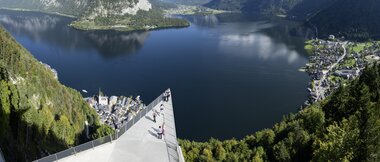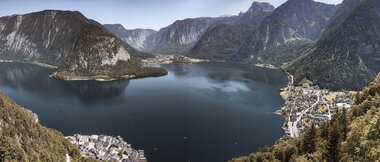All About Salt - Since 7000 Years Ago A blog article by Hallstatt archeologists Hans Reschreiter, Daniel Brandner, Johann Rudorfer and Kerstin Kowarik
There is no other region worldwide that has been so renowned for its engagement in salt production from the Stone Age to the present day. The world’s oldest industrial and cultural landscape developed in and around the Salzberg in Hallstatt. This extensive history of salt, the effects of salt production and transportation on all aspects of life and the landscape, along with the harmonious interplay between mankind and nature, were among the main arguments for the Hallstatt - Dachstein/Salzkammergut Region being accepted by the UNESCO World Heritage List 25 years ago.
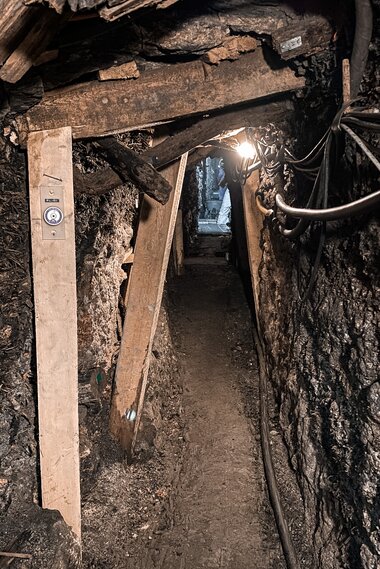
7000 Years of Salt Mining
New research has shown that salt production in the Salzkammergut began in the Stone Age and intensified massively in the Bronze Age ca. 1300 BCE. Furthermore, there is strong evidence that the inner Salzkammergut region has been continually inhabited, and that salt has been produced here ever. This deep-rooted tradition is continued to this day by Salinen Austria AG.
Large-scale, millennia-long salt production in an alpine environment requires a reliable supply of industrial resources and foodstuffs. In order to continue successful mining, the delivery of these essentials and the shipment of salt must function flawlessly, so infrastructure must be in place to successfully manage extreme events such as avalanches, landslides and flooding. In order to ensure access to supplies and transportation, the resources of the surrounding countryside have been relied on since prehistoric times. Even a mere 100 years ago, the entire landscape – the alpine pastures and high meadows, the forests, the rocks as building materials, the streams and rivers as transportation arteries for the salt and for log driving – was intensively utilized. Virtually all manpower was directly or indirectly involved with salt – in primary production, at the saltworks, along the brine pipelines, in forestry, or in the supply of foods and production resources, or in transportation, salt shipping or log driving. The result was an all-encompassing landscape revolving purely around salt.
With the building of the railway line in 1877 and, later, the expansion of the road network mass transportation became easier, reducing the need to produce everything directly within the Salzkammergut. Much of the regional infrastructure surrounding salt production, salt transportation, and production of industrial supplies as well as foodstuffs was soon abandoned.
Through ongoing automation and technical advances, fewer and fewer people are employed in salt production, whilst the infrastructure which is still required is barely even perceptible anymore.
To outsiders, today’s salt production is almost invisible, fading ever further from the collective consciousness of the region.
While it may be that salt no longer shapes the landscape and regional identity as it did in past millennia, the world’s oldest industrial and cultural landscape is in the process of transforming into a landscape shaped by tourism– even as more salt is produced in the Salzkammergut than ever before.
With a combination of research and clear communication of the unique qualities of this landscape shaped by salt, we hope to simultaneously preserve this World Heritage Site and continue cautious, careful development along several different paths.
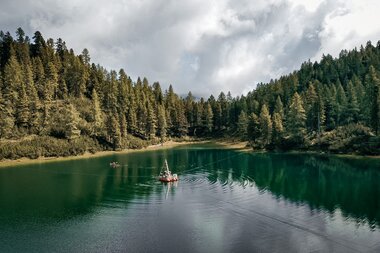
Research Findings
The Natural History Museum of Vienna, in cooperation with Salinen Austria AG and Salzwelten GmbH, as well as numerous research partners, is working to understand the 7000-year history of salt in this region in even greater detail. In 2021, in Lake Hallstatt as well as Lake Grafenberg on the Dachstein plateau, researchers collected sedimentary core samples spanning the last 10,000 years, making it possible to reconstruct the origins and development of the salt landscape as well as hill-farming practices, from the days of the primeval forests to the tourist destination of today. From one moor in Hallstatt, initial findings have already shed light on life in the Salzberg valley in the past 6400 years – findings that show that the harmonious interplay between mankind and nature. This strong interdependence, as cited in the original UNESCO justification, dates all the way back to the Bronze Age. There is also evidence of sustained forestry activity from 1200 BCE to the present day.
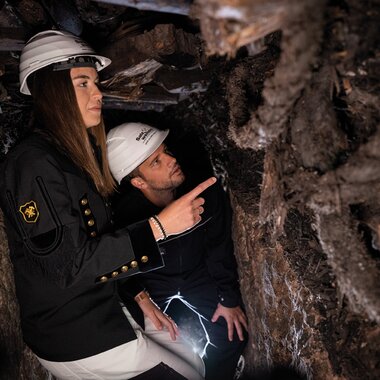
Experience the history of salt live
People only protect what they know – this principle applies not only to environmental protection, but also to the preservation of World Heritage sites. That said, it isn’t always easy to recognize what makes salt in this region so worthy of its World Heritage status. Most prehistoric and medieval salt history lies hidden, invisible within the ground or conserved hundreds of meters deep inside the Salzberg. The relics of industrial salt production, even of the more recent past are also in many cases only recognizable to the practiced eye. In order to make the barely visible aspects of salt history more clearly discernable and tangible, an intensive path of communication and visualization has been pursued. Themed trails and info boards are integral to the communication concept, alongside high-quality infotainment inside Salzwelten. In the Bronze Age Cinema, one of the many highlights of the guided tour of the Salzberg, and in the VR room, the prehistoric salt culture is presented to the broader public. This subterranean world can also be explored virtually. Both the research tunnels as well as some of the extraordinary finds are available on the Net.
Virtually experience salt-research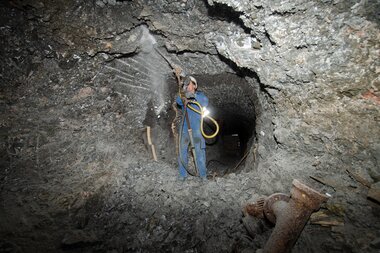
World Heritage Preservation Projects in the Salzkammergut
In the recording and recounting of the 7000-year history of salt, certain anchor points in the landscape have proven valuable as spurs for communication and visualization. Consequently, increased attention is being paid to the surviving industrial monuments of salt production and transportation. Mine entrances and buildings are being rehabilitated, the brine pipeline from Hallstatt via Bad Ischl to Ebensee is coming increasingly into focus, and industrial buildings are, in some cases, being carefully adapted. Furthermore, in recent years the “Salzbergtal and Dammwiese Archaeological Landscape Monument” was created. Yet another preservation project has been pursued with considerable commitment for the past three years; the Salinen Austria AG and the Austrian Natural History Museum aim to upgrade access to underground archaeological sites by 2026. This project, financed by the Austrian Federal Chancellery and the Province of Upper Austria, should further preserve this remarkable World Heritage site for future generations.
The goal of this World Heritage Site is to continue to carry forward the fascinating history of salt and to anchor the Salzkammergut’s salt landscape in people’s minds. The preservation of the cultural landscape and its specific elements is a responsibility that should also be borne by the public at large, but this is only possible if there is broad understanding and appreciation for the legacy which needs to be preserved. Without this awareness, the monuments and evidence of Cultural World Heritage become merely “old, worthless things,” that are no longer seen as necessary, nor worthy of our attention.
To continue the growth and development of the Salzkammergut and prepare to meet impending challenges, an upgrade of infrastructure is essential, including enhanced protection against flash-flooding and avalanches. However, the installation of infrastructure and protective measures often requires removal of earth or structural changes to buildings. A sensitive and finely tuned hand will be required to preserve the uniqueness of this millennia-old cultural landscape whilst simultaneously continuing its development.
More Information on Research in Hallstatt
Digital Prehisitoric Mining Content
Salzwelten Hallstatt, in cooperation with NHM Wien, offers fascinating programs and regular special tours about archaeology on the Salzberg. Find more information here.
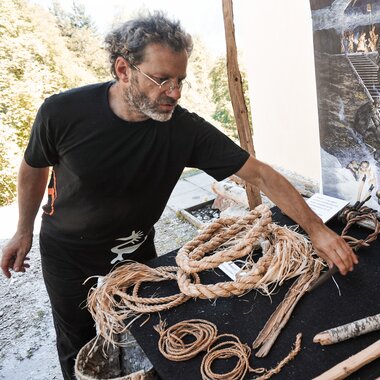
About the Author
Dr. Hans Reschreiter
Hallstatt archeologist Hans Reschreiter is employed at Natural History Museum Vienna and has overseen excavations in the Hallstatt mine since 2001. Together with his team, he is constantly searching for unusual finds and is very much a preeminent authority in his field. Who knows, maybe you have already met him personally at one of our Archaeology on the Mountain events or at World Heritage Day?
More about the supporting research team